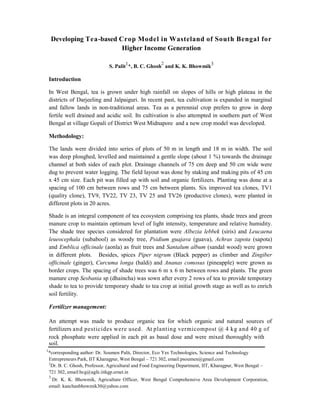This document describes developing a tea-based crop model in wastelands in South Bengal for higher income generation. The methodology involved dividing land into plots for tea cultivation with various shade trees, spices, and green manure crops. Organic fertilizers and pesticides were used. Tea varieties were planted and managed through debudding, pruning, tipping, and plucking. A yield of 1,100 kg/ha of made tea was achieved along with fruit yields. A nursery was established for propagating tea clones. Tea processing and quality assessment showed standard quality tea was produced. The developed multistoried cropping system integrating tea, horticulture, and spices can be adopted in marginal wastelands and generate income and employment



